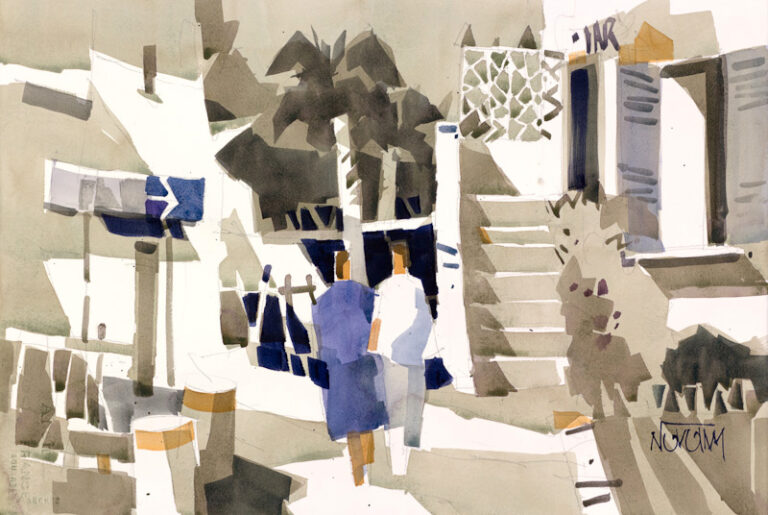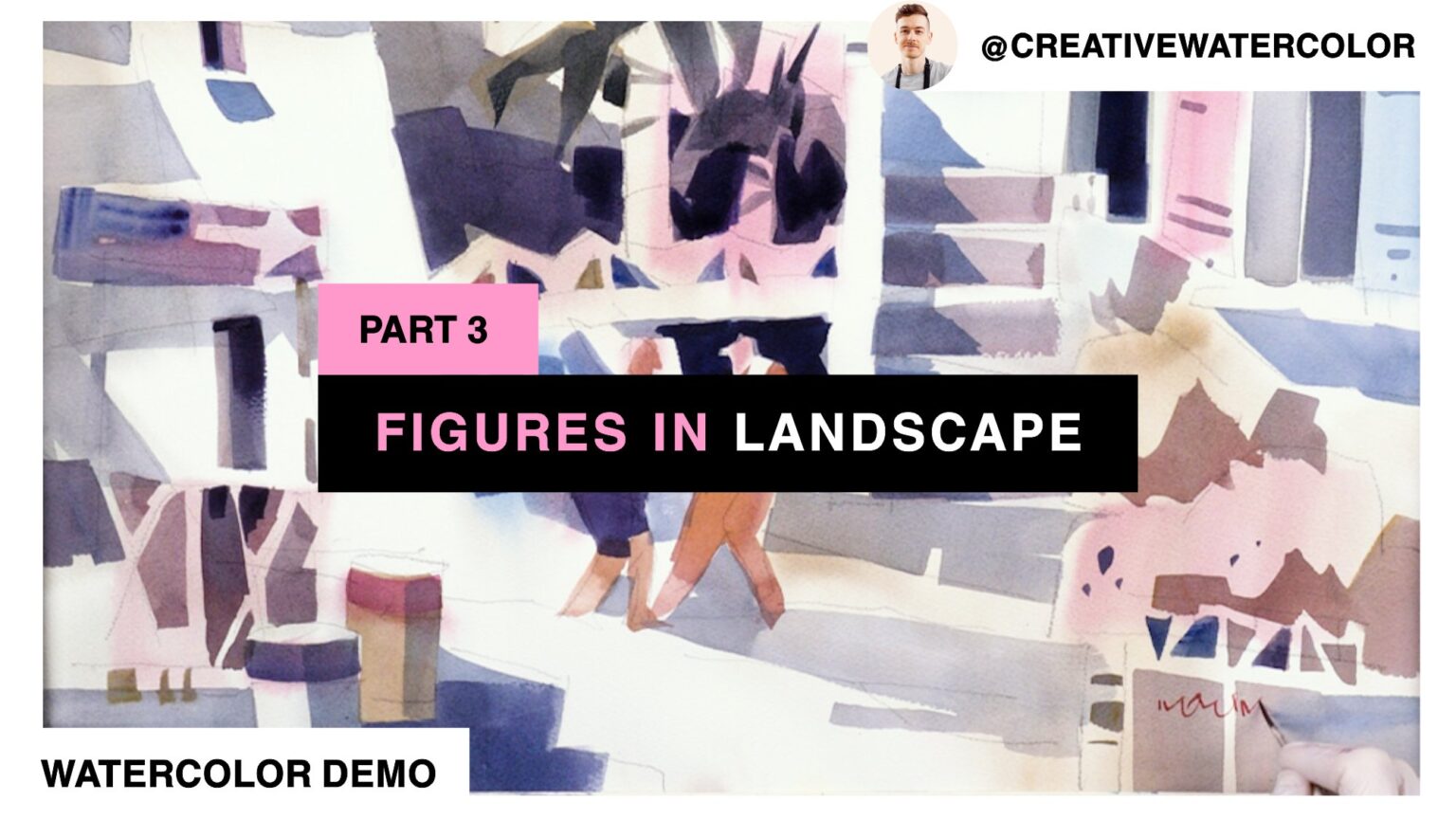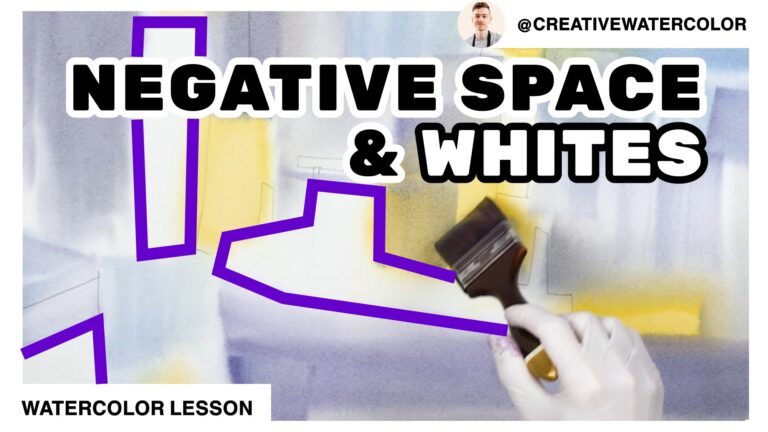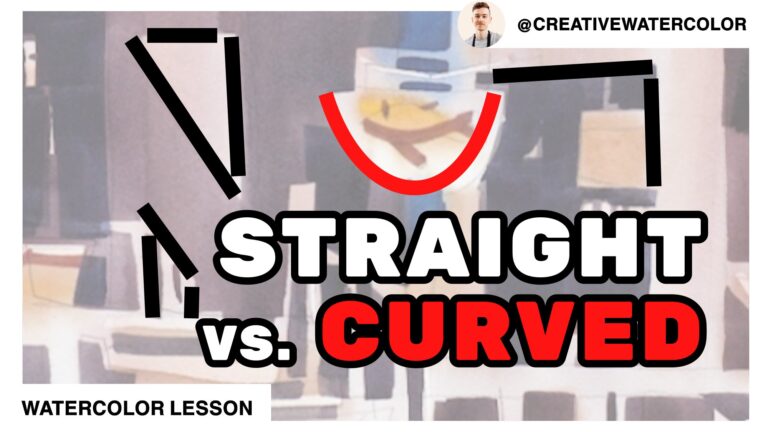How to paint figures in a watercolor landscape painting – learn everything about my recommendations when it comes to painting figures in a watercolor landscape painting!
How To Paint FIGURES In A Watercolor Landscape Painting - Material List
Paints
- Winsor & Newton Winsor Yellow
- Winsor & Newton Winsor Yellow Deep
- American Journey Halloween Orange
- Daniel Smith Pyrrol Red
- Winsor & Newton Permanent Rose
- Winsor & Newton Permanent Alizarin Crimson
- American Journey Joe’s Green
- American Journey Cerulean Blue
- American Journey Cobalt Blue
- Winsor & Newton Winsor Blue Green Shade
- Holbein Permanent Violet
Brushes
- Winsor & Newton One Stroke Sable ½”
- Winsor & Newton Series 995 Synthetic 1″
- Robert Simmons Skyflow Synthetic 2″
- Robert Simmons Skyflow White Sable 1½”
- Rosemary & Co Pure Sable Series 90 #6
Paper
- Saunders Waterford 140lb Cold Press, 15″ x 22″
How To Paint FIGURES In A Watercolor Landscape Painting - Reference Images



How To Paint FIGURES In A Watercolor Landscape Painting- The Lesson
Hello friends and welcome back to my studio for the final episode of this week’s painting.
In the previous lessons we talked about the two approaches to rendering a scene, we discussed the power of neutrals and went through many of the techniques and ideas incorporated in this painting. You can notice my application of these techniques as we continue with today’s demo.
Today’s focus is on painting figures in a watercolor landscape. There are multiple points to discuss when it comes to painting figures.
- Drawing: if you’re going to include figures in your landscape paintings you need to be able to draw believable figures. Remember that a figure is a shape. There are several rules when it comes to figures but many are relative to your painting at hand. Let me mention three I find particularly important: scale, proportion and perspective. Scale should always be determined by the artist. Proper scale helps explain the environment and its relation to the figure. If a figure is larger than a house the painting is either depicting a giant invading a village or the artist didn’t take scale into consideration. Proportion then is all about the internal dimensions and relationships of parts to the whole. Are the arms in proper relationship to the torso and the legs? Is the head large enough so that is reads as a head of an adult human. Or is it larger in comparison to a body and as such depicts a child? Keeping an eye on the proportions is vital in visual storytelling. Perspective of figures in a landscape has more to do with the figure placement than distortion. This too depends on the particular painting but generally, the head of your figures should be level with the horizon line. If you have one figure in the foreground and one in the background, both their heads should be placed on the horizon line (unless there’s an elevation) while their bodies are smaller the further back they are. Drawing figures separately of your painting sessions will greatly help you get familiar with these ideas. Remember that figures are shapes.
- Gesture: A figure represent a human. Humans are active. Their interests are varied. Fortunately there’s a way to contain a whole world of human complexity and it is through gesture. Remember that it’s best to have one figure do one thing, even if that thing is walking down the street. If that’s what works for your painting that’s what you should make your figure do. If you decide to make your figures a more engaging part of the composition and storytelling, you need to provide them with a way to express themselves. In this painting I decided to tell a story that became the title of this demo: ‘A friendly encounter.’ The idea is of two acquaintances, potentially friends, meeting in public and exchanging a friendly greeting and a warm handshake. That’s all my figures are doing. They don’t need to repair a car while they’re doing it. They’re not on the way to beach, grocery store or the barber. They may be, but what they do in the painting is greet warmly. Always focus on one activity. Make it clear what your figure’s purpose is and focus their gesture accordingly.
- Detail or level of completion: I’d like to discuss the amount of detail that a figure needs and how you can gauge it. Once again, this is relative to how developed is your painting. The approach I recommend is to bring the level of completion up gradually. Develop your figures with the same tempo as the rest of your painting. Don’t focus on “finishing” your figures first and then paint the rest or vice versa. I think this painting is a great demonstration of this gradual approach. The one thing I can recommend is to focus on the gesture first. I find that we often mess up our figures because we are searching for a gesture even though we may not know it. We keep working on them until we overwork them, without ever developing the gesture which lead us made us overwork them in the first place. Have a clear gesture in mind before your start and you’ll have much easier time painting figures in your paintings.
- Value: last but certainly not least, value is a very important consideration when painting figures. Always keep in mind this simple general rule: place a light against dark and dark against light. Place light figure against a dark background. Place a dark figure next to a light one. Make the shirt of one figure light, the other dark. The bottom line is to make the figures readable. Value pattern around the figures should be designed with this goal in mind: readability through alternation of value.
That’s all for this week of painting. I had a blast and I hope you enjoyed yourselves too! Hopefully you learned something that you can use in your own work. If so, please let me know what it was in the comments below, like the video and subscribe if you’re enjoying my demos and I’ll see you in the next one!




